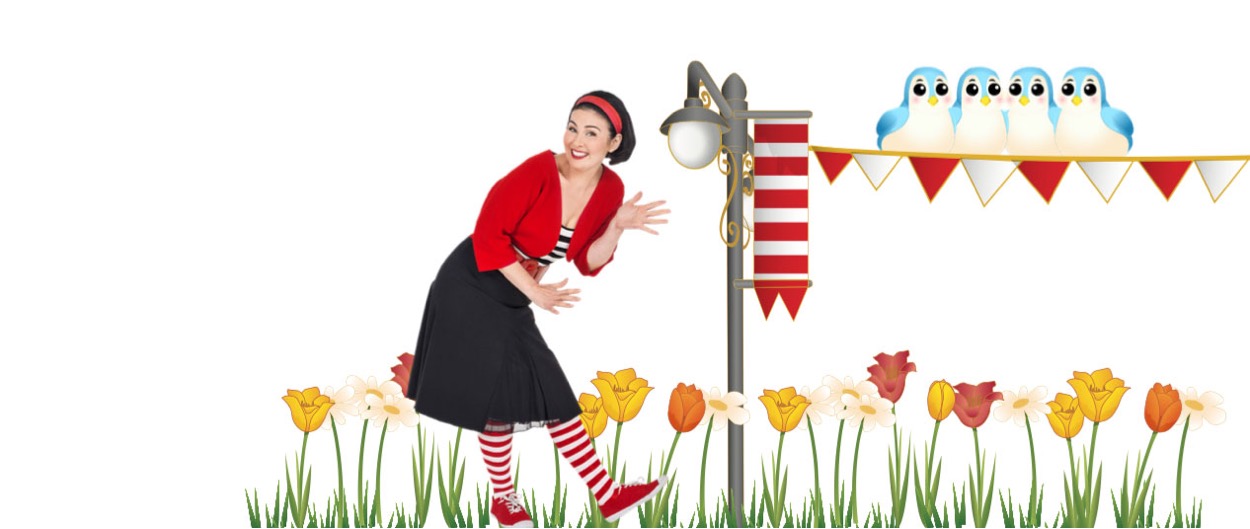

Form refers to the structure of a piece of music. This includes what is the same, different, and similar in the music, and the order of the different sections in the piece.
Different text types have different structures, such as the chronological steps in procedural texts, or the beginning, middle and end in simple narratives.
Just as writers use text types to structure their work, musicians like Lah-Lah’s Big Live Band use musical form to organise their sounds.

- Identify same, different, and similar sections of music (also known as repetition, contrast and variation)
- Understand that sections of music can be repeated
- Learn the names for some sections of music, such as verse and chorus
- Understand that music is organised into phrases of varying lengths.

Choose a simple repetitive book that your students are very familiar with, such as ‘Brown Bear, Brown Bear, What Do You See?’ by Bill Martin Jr and Eric Carle. Read the first page or two, and ask students to recall or predict the following lines of the story.
How did you know what would come next? What makes it easy to remember the words? Just like authors, musicians use patterns and repetition to help us remember their songs and to predict what will come next. This is called musical form or structure.
Teacher Tutorials
Explainer
Elaboration
Extension
Music Clips
Pack Away
Look Out Backyard
Big, Bold and Brassy
Lessons
Lesson 1
WALT: Identify which sections of a song are the same, and which are different.
Discussion starter
Watch Lah-Lah’s Adventures clip ‘Pack Away’ with your class, asking students to look and listen for different sections in the song. In a ‘Think, Pair, Share’ task, students discuss their observations with a partner before joining a class discussion about the sections of music in the clip.
How many sections were there? Which sections were the same? Could you predict which one would come next? Aside from Lah-Lah and Buzz’s singing, what else made the sections different? Students may have noticed changes in the length of the sections, or the different instruments being used.
Learning task
Play the clip again, asking students to use different body movements when they hear the different sections of music. How would you describe these sections? Did they make you want to move in a certain way? When Buzz finally agrees to pack up, he sings in a different way: we could describe this by saying it ‘contrasts’ with his previous singing. It is also similar to Lah-Lah’s singing in the introduction.
Lesson 2
WALT: Hear the verse and chorus in a song.
Discussion starter
Sing the song 'Five Little Ducks' with your class, discussing how each section of the song sounds similar but with one less duck each time. This repeated section is called a 'verse'. Verses use the same notes, but the words change each time to help tell the story of the song.
What do you think is the main message of this song? Students could brainstorm a short message, such as, 'Don't go out without your mum, little ducks'. Ask students to sing the song again, but this time chanting their message in between each verse. The repeated message in between verses of a song is called a 'chorus'.
Learning task
Asking students to pay attention to the different sections in the song, play the first half of the clip ‘Look Out Backyard’ (pausing the clip at Sneezy Squeezy’s keyboard solo). In this song, the verses describe fun things to do in the backyard after school, and the chorus is a series of verbs. Could you hear the section that stayed the same? This is called the chorus, and the other sections are verses. Can you sing the chorus?
Replay the clip a number of times, pausing to help students identify the verses and chorus. Listen carefully to the verses: what are some of the things Buzz likes to do in the backyard?
As a follow up, students could write about their favourite things to do after school, or collaboratively writing a new verse or chorus for the song.
Lesson 3
WALT: Understand that music is made up of phrases.
Discussion starter
Musical phrases are similar to phrases in a spoken language; they are a complete idea, and the end of a phrase feels like the natural place for a pause. Just like sentences, musical phrases can be long or short.
Some phrases you already might know are “Miss Polly had a dolly who was sick, sick, sick”, or “Baa baa black sheep, have you any wool?” Can you think of any other musical phrases from songs or nursery rhymes?
Learning task
Watch the Lah-Lah’s Adventures clip ‘Big, Bold and Brassy’, asking students to focus on hearing the different phrases in the song. Can you hear the short pauses at the end of the phrase, like at the end of sentence?
Watch the clip again, and have your students walk around to the beat of the song. To help them to recognise the varying lengths of the musical phrases, ask them to change their walking direction at the end of each phrase. This activity could be repeated with nursery rhymes and other familiar music.
As a follow up activity, students could write about their favourite things to do after school, or collaboratively write a new verse or chorus for the song.
Assessment
Why does music need structure? Do you know any new words to describe different sections of music? What else would you like to know?
Can students identify same, different and similar sections in music? Can they describe the contrasting ideas or feelings in different sections of music? Can they identify the verse and chorus in a known song? Can they identify a musical phrase in a known song?
Assessment strategies include:
- Teacher observations
- Checklists for the target knowledge and skills
- Photograph and annotate students' written work, such as their responses to 'Look Out Backyard'.

